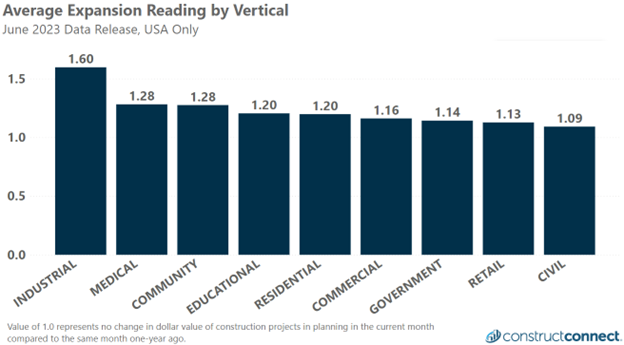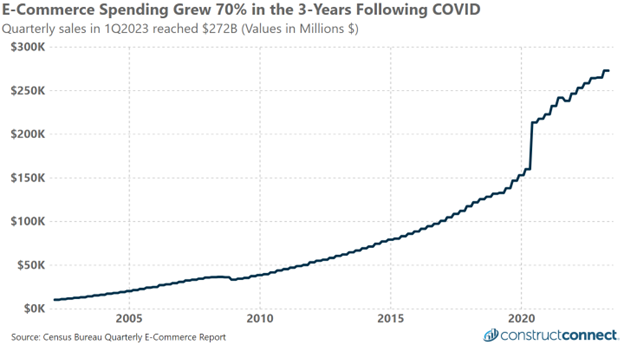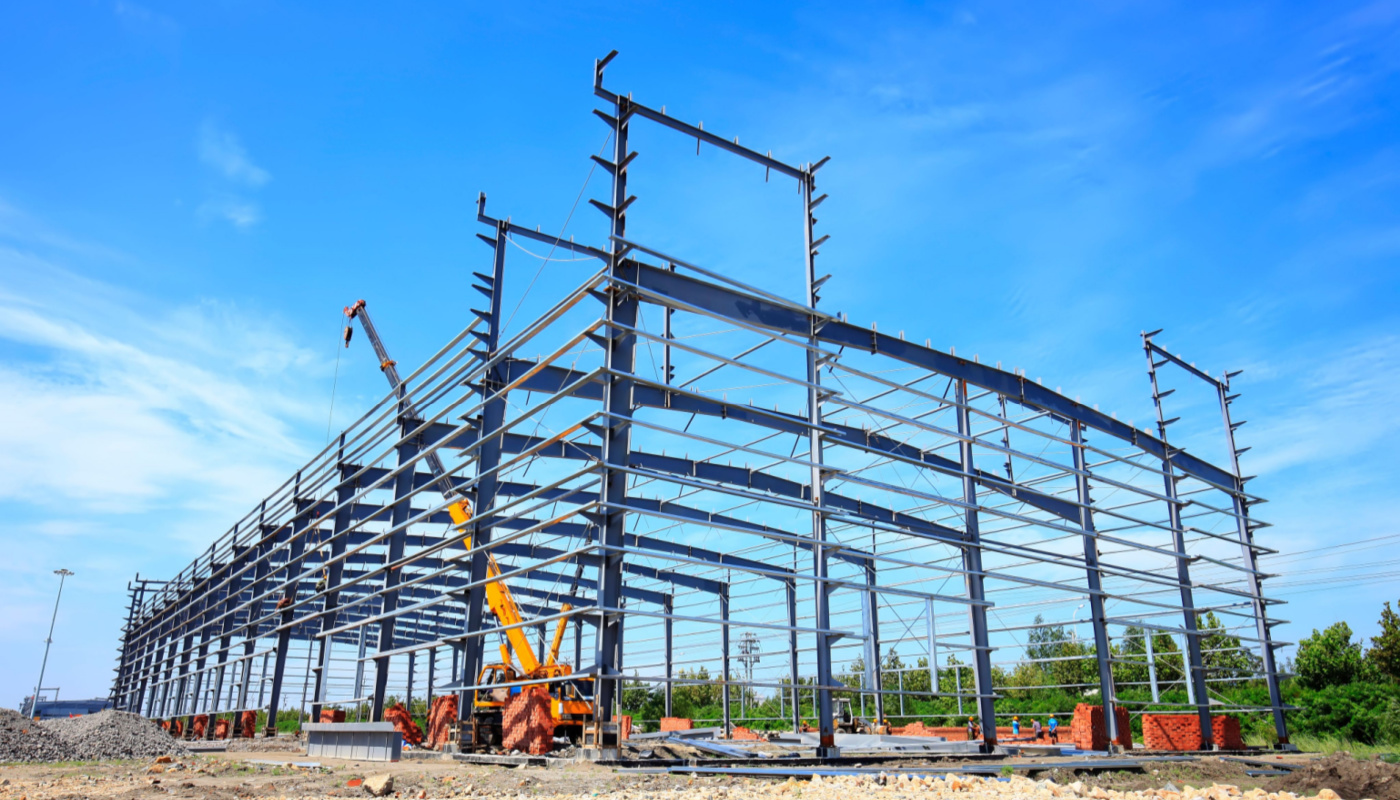The economics team at ConstructConnect frequently emphasizes the importance that geography and market verticals have on the future prospects of any construction firm. Freely available data from our Expansion Index makes it possible for any construction business owner with a computer to view for themselves the expected divergence in anticipated construction spending by metropolitan statistical area (MSA) and market vertical. ConstructConnect Insight allows users to see not only historical construction spending by MSA and vertical, but forecast expectations as well.
Among all verticals tracked by ConstructConnect, none has come close to matching the contemplated construction spending of warehouses and industrial structures more generally. Multiple trends are to thank for this, including the increasing popularity of megaprojects, the reshoring of manufactured production, the evolution and expansion of the green economy, and, importantly, the growth of e-commerce sales. All of these trends have contributed to the booming demand for warehouse and industrial construction.

This boom in warehouse demand also underpins why warehouse construction costs have risen faster than nearly any other construction type in recent history. According to data from the Bureau of Labor Statistics, during the two-year period ending May 2023, the producer price index for warehouse construction increased by 41%, handily beating industrial construction at 36%, along with most other forms of nonresidential and non-civil construction.
Among the drivers of warehouse construction, U.S. e-commerce sales increased by 71% in the three years ending March 31, 2023. Although a significant amount of that growth occurred in 2020, as COVID-19’s initial impact changed spending patterns and behaviors, annual growth based on recent quarterly figures often exceeded 10%. For reference, total sales growth between the first quarters of 2022 and 2023 was 12.5%.

There is little reason to suspect that any of the above-cited trends bolstering warehouse construction will abate soon. Each driver has a significant opportunity for capturing greater market share from traditional markets and products. Consumers continue to manifest their preference for online shopping and consumption from an ever-growing list of goods, as evidenced by the more than 20-year growth in e-commerce sales. The challenge for the construction industry will, therefore, not be one of finding enough demand, but rather of supplying enough labor and materials to meet the seemingly endless expansion in online consumption.
